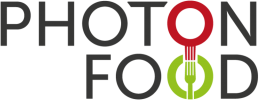
Analytical techniques for the measurements of chemical and microbial contaminations along the food chain require detection levels in the ppb range. A direct measurement of contaminants at theses concentrations in a food matrix is not possible by any photonics principle.
PHOTONFOOD aims to overcome this barrier by developing an integrated solution that combines innovations in smart paper-based sample treatment, mid-infrared (MIR) sensing and advanced data analysis.
Mid-infrared (MIR) spectroscopy has proven to be the most reliable and broadly applicable spectroscopic method for detection, characterization and quantification of chemical and microbial contamination.
To transform MIR sensing from existing lab solutions into a portable solution to broad usage in the food chain, PHTONFOOD aims to develop novel infrared light sources, specifically interband cascade light emitting diode (IC-LED), and interband and quantum cascade lasers (ICL/QCL).
The light sources will be combined with sophisticated waveguide technology and 3D-paper microfluidics. The project will develop a solution consisting of:
- A mid-fidelity (MI-FI) device with an envisioned low-price range that can be used for daily monitoring, and
- a medium-price range high-fidelity (HI-FI) device for reference analysis and accreditation.
The solution will be validated and demonstrated in real scenarios for fungal and water mould (oomycetes) contamination, mycotoxins in wheat, nuts, dried fruits and aquaponic-based herbs, as well as pesticides and antibiotics in aquaponic-based herbs.
The research will be performed by a multidisciplinary and highly acknowledged research team in collaboration with leading mycotoxin analysis laboratories, an aquaponics farm, a distributor of dry foods and farms with on-site food processing and vending.
Strategies for transferring the obtained data and integrating it into data platforms for tracing food contamination, improving food quality and reducing waste will be developed.
